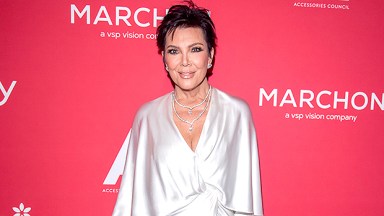The Federal Reserve signalled its support for two more interest rate rises this year, including one that could be implemented at its next meeting in July, even as it skipped an increase for the first time in more than a year.
At the end of its two-day gathering on Wednesday, the Federal Open Market Committee voted unanimously to forgo another quarter-point rate increase and hold the federal funds rate at the existing target range of between 5 per cent and 5.25 per cent.
But despite the first reprieve in an aggressive monetary tightening campaign that started in March 2022, Fed chair Jay Powell made clear the US central bank intends to squeeze the world’s largest economy further to bring persistently high inflation under control.
“Nearly all committee participants view it as likely that some further rate increases will be appropriate this year,” Powell said in a press conference after the rate decision. He added he expected the meeting next month to be a “live” one, sending a strong hint that the Fed is inclined to raise rates on July 26.
Most policymakers are projecting two additional quarter-point increases this year in a move that would lift the benchmark rate to between 5.5 per cent and 5.75 per cent, according to an updated “dot plot” published on Wednesday that collates officials’ forecasts until the end of 2025.
Despite the Fed’s view that more rate rises are necessary, Powell defended the decision to hold steady on Wednesday, arguing it was a “prudent” move given how much the central bank has already tried to damp economic activity. He said the committee had also taken into account “potential headwinds” from the recent regional banking crisis.
“This is an awkward place for the Fed to be because the communication is really difficult,” said Michael de Pass of Citadel Securities. “They’re saying there hasn’t been enough progress on inflation, but also that they’re pausing.”

Powell said the Fed needed “credible evidence that inflation is topping out and then beginning to come down” before concluding it had squeezed the economy sufficiently, noting there had been little progress in bringing core inflation down in recent months.
Most officials forecast that the fed funds rate will decline to 4.6 per cent in 2024 and 3.4 per cent in 2025, both above the respective March estimates, suggesting the Fed intends to keep monetary policy tighter for longer as it tries to tame inflation.
Following Powell’s press conference, the yield on the two-year Treasury note, which moves with interest rate expectations, rose to its highest level since mid-March. Traders in the futures market pared back wagers that the Fed will cut rates this year. US stocks whipsawed, falling at first before recovering.
In March, when the dot plot was last updated, most policymakers projected the central bank would not raise rates beyond the current level, in large part because of the aftershocks from the failures of Silicon Valley Bank and other lenders.
Since then, the economic picture has been mixed, stoking an intense debate among Fed officials over if and when more rate rises will be needed. Economists polled by the Financial Times last week predicted the central bank would raise rates at least two more times this year to a range between 5.5 per cent and 6 per cent.
The latest consumer price index report, released on Tuesday, showed a deceleration in annual inflation despite persistent price pressures across many segments of the economy. The labour market has lost some momentum but remains very strong, encouraging consumers to keep spending.
According to the projections released on Wednesday, most officials now project “core” inflation, based on the personal consumption expenditures price index, to decline to 3.9 per cent this year before further slowing to 2.6 per cent in 2024 and 2.2 per cent in 2025.
That suggests inflation will fall more slowly compared with previous forecasts released in March, when the median estimate for core PCE in 2023 was 3.6 per cent. It is currently hovering at 4.7 per cent.
Officials also pencilled in much higher growth this year, with the economy expanding by 1 per cent. That is sharply above the 0.4 per cent estimate released in March. The unemployment rate is expected to peak at 4.5 per cent in 2024, just shy of the earlier 4.6 per cent forecast.


























































![Mason Ramsey – Twang [Official Music Video] Mason Ramsey – Twang [Official Music Video]](https://i.ytimg.com/vi/xwe8F_AhLY0/maxresdefault.jpg)














![Brilliant Minds Season 1 Finale Review: [Spoiler’s] Return Throws Oliver’s World Out of Control Brilliant Minds Season 1 Finale Review: [Spoiler’s] Return Throws Oliver’s World Out of Control](https://cdn.tvfanatic.com/uploads/2025/01/Rushing-to-Save-the-Apartment-Victims-Brilliant-Minds-Season-1-Episode-12.jpg)




